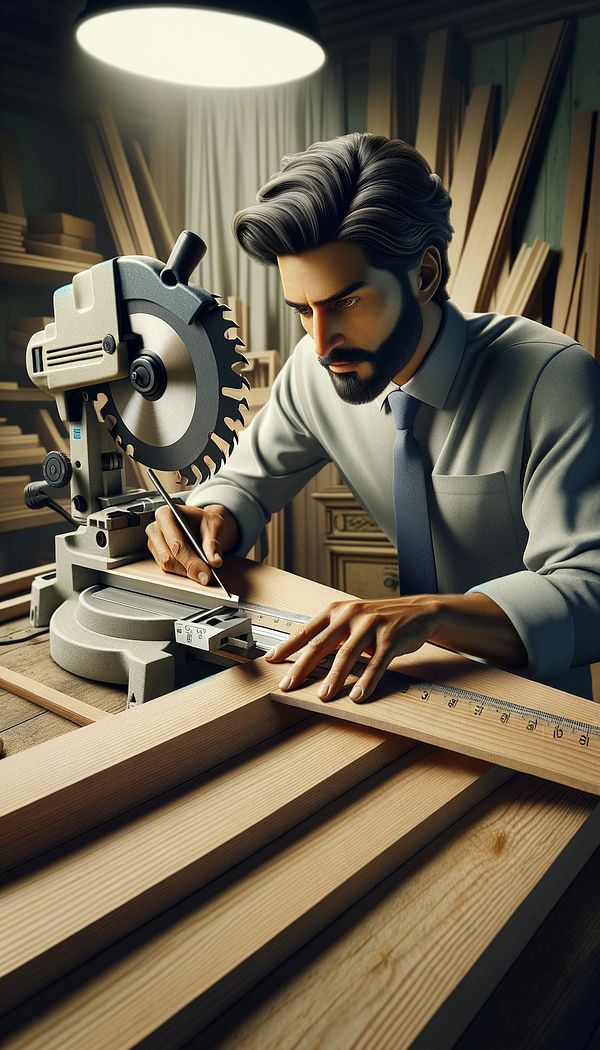What is a Miter Joint?
A miter joint is a type of joint made by beveling each of two parts to be joined, usually at a 45° angle, to form a corner, typically a 90° angle.
Description
A miter joint is one of the most commonly used methods to join two pieces of wood, metal, or other materials at a corner. It involves cutting two parts in such a way that they form complementary angles, usually 45°, allowing them to fit together to create a precise and visually appealing right angle. This type of joint is notable for its aesthetic appeal since it hides the end grain of both pieces, creating a seamless finish that is often desirable in fine woodworking, molding, framing, and various types of cabinetry.
The creation of a strong miter joint often requires precise cutting and sometimes reinforcement with adhesives, nails, or screws. For added strength, especially in woodworking, splines, biscuits, or dowels might be used. This ensures the joint not only looks good but is also structurally sound. Miter joints are particularly valued for their clean, minimal look, making them popular in both modern and traditional interior design projects.
However, creating an effective miter joint demands a degree of skill and precision. Incorrect measurements or cuts can lead to gaps or weak joints, detracting from the overall appearance and longevity of the piece. Therefore, ensuring the accuracy of the angles and the fit is crucial to the joint's success.
Usage
Miter joints are extensively used in the construction of picture frames, door and window trims, and various furniture pieces. They are also applied in architectural millwork such as crown molding and baseboards, where the neat, angled joints contribute significantly to the project's overall aesthetics. In modern interior designs, miter joints are prized for their ability to create smooth, continuous lines that enhance the minimalist aesthetic.
FAQs
-
Can miter joints be used with materials other than wood?
Yes, while miter joints are commonly associated with woodworking, they can also be effectively used with other materials such as plastic, metal, and composites, depending on the specific requirements of the project.
-
Do all miter joints have to be at a 45° angle?
No, although 45° angles are standard for creating a 90° corner, miter joints can be cut at various angles to fit a range of corner angles and design needs.
-
How can I strengthen a miter joint?
Miter joints can be strengthened through the use of adhesives, nails, or screws. For woodworking projects, adding splines, biscuits, or dowels can significantly improve the joint's strength and durability.
Practical Application
When working with miter joints, it's important to measure and cut with precision to ensure a perfect fit. Using a miter saw can greatly improve accuracy. For extra strength, consider reinforcing the joint with suitable adhesives and fasteners. Regularly checking the angle with a protractor or angle finder tool can also help achieve the best result. Practicing cuts on scrap pieces before executing on the final project can help hone your skills and ensure cleaner, more reliable miter joints.
-
Furniture Types599 articles
-
Decorative Techniques322 articles
-
Construction & Building86 articles
-
Wall Treatments & Finishes157 articles
-
VarietyVariety in interior design refers to the quality of being different or diverse.
-
RegencyRegency refers to a style of interior design characterized by elegance, refinement, and an emphasis on symmetry and geometric shapes.
-
SegmentalSegmental refers to parts or segments of a whole, often relating to design elements divided into sections.
-
Tudor RoseA traditional floral symbol of England, often used in architecture and design.
-
Mule ChestA mule chest is a traditional piece of furniture that combines the features of a chest and a drawer.
